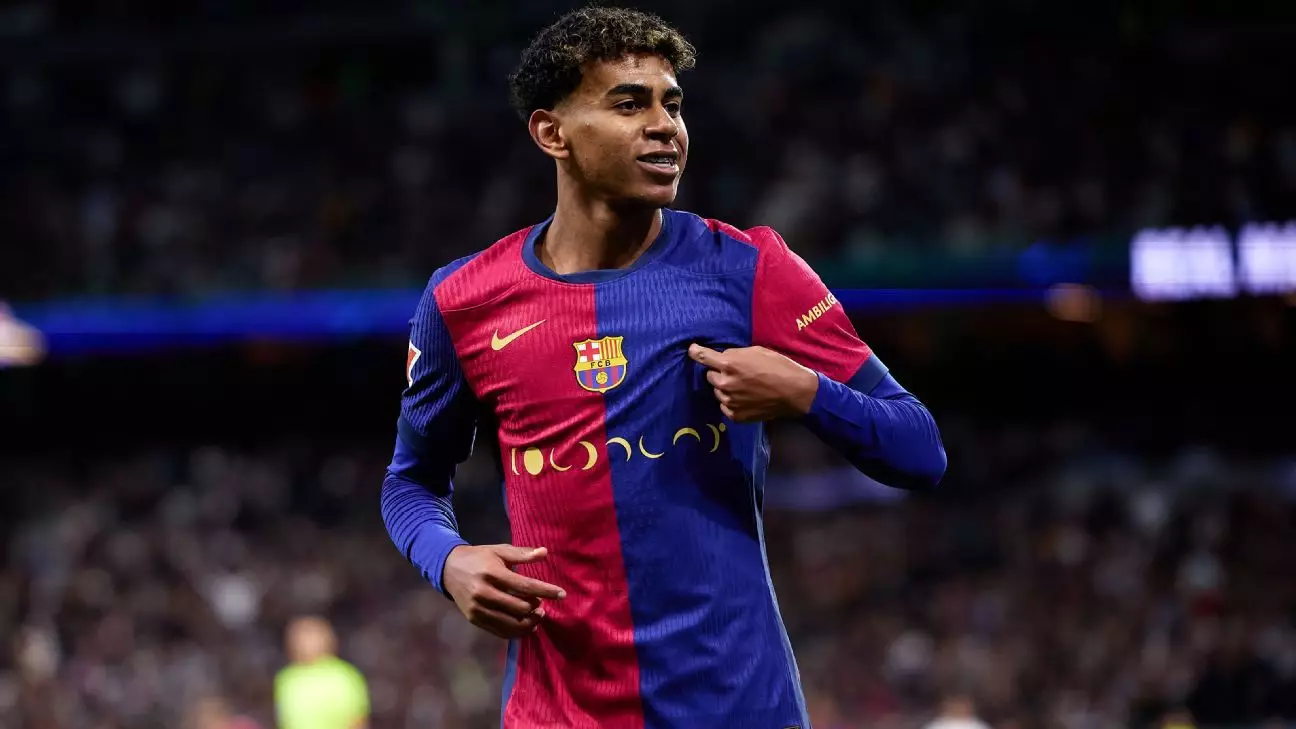The landscape of soccer has been dramatically altered with the end of an era that has defined the sport for nearly two decades. With Lionel Messi and Cristiano Ronaldo no longer nominated for the 2024 Ballon d’Or, a significant shift has occurred in how we assess and compare talent in the world of football. This article examines the implications of their departure, the performance of current players, and how the legacy they leave behind serves as a benchmark for future generations.
For the first time since 2003, the illustrious stranglehold of Messi and Ronaldo on the game’s highest honors has been broken. Their absence from the Ballon d’Or nominations is symbolic of a transitional phase in soccer, marking a shift away from a binary competition that has captivated fans worldwide. While many have clung to the notion that the Ballon d’Or embodies the history of soccer, critics point to its inconsistencies, such as the perplexing placement of players like Dani Carvajal in fourth place in the voting. It can be argued that the award lacks the true reflection of player contributions to the sport, yet it remains the most systematic historical record we have.
Lionel Messi has long dazzled fans with his unfathomable skills, while Ronaldo’s athleticism and precision have redefined scoring in football. Though both athletes have not had the same direct impact on the game in recent years, their legacy remains ever-present. As we critique their remarkable achievements, we must now redirect our attention to how emerging players stack up against the dynamic duo.
To understand how current players fare against the colossal figures of Messi and Ronaldo, analysts have created what is dubbed the “Messi-Ronaldo Line,” which quantifies their combined non-penalty goal and assist rates throughout their careers. Starting from their teenage years up to the twilight of their careers, we can examine data that poses the ultimate question: Can anyone match or surpass these legends?
In reviewing player performances relative to the Messi-Ronaldo Line, the statistics reveal a stark reality—many current players are struggling to keep pace. For example, Messi’s performance in 2024 demonstrated an impressive average of 1.29 non-penalty goals plus assists per 90 minutes over 70 minutes of play. Meanwhile, Ronaldo mustered just 0.50 npG+A per 90 in 1,080 minutes. Such statistics reveal the daunting challenge for younger players to emulate the mastery exhibited by Messi and Ronaldo.
Players like Lamine Yamal begin to emerge as potential candidates to join the ranks of the greats. With a substantial 2,700 minutes played and a remarkable 0.73 npG+A per 90 minutes, Yamal exemplifies the burgeoning talent capable of transcending expectations.
When examining other current players, it becomes increasingly evident that very few have excelled in alignment with the historical standards set by Messi and Ronaldo. For instance, the performance of players like Désiré Doué, with an average of 0.47 npG+A, pales in comparison to the legacy left by the two giants.
As we delve deeper into player stats from the 2024 season, we note that no 24-year-old player came close to achieving the outputs of Messi or Ronaldo during their peak years. With Vinícius Júnior, despite his noteworthy contributions, he only managed to average 0.99 npG+A. This raises questions about the development trajectory of younger players in a landscape where being compared to Messi and Ronaldo has become the gold standard.
However, a glimmer of hope exists in the talents of players like Bayern Munich’s Jamal Musiala, who produced 0.93 npG+A in over 2,124 minutes played. The challenge remains for undoubtedly talented individuals to expand their skill sets beyond dribbling prowess and develop a comprehensive outlook on creativity and scoring.
An undeniable aspect of Messi and Ronaldo’s careers is their remarkable consistency well into their thirties. As we examine the performance metrics of players currently in their prime, we observe that Muhammad Salah and Harry Kane are garnering attention with their impactful contributions; however, they still fall short of replicating the legendary span of effectiveness exhibited by Messi and Ronaldo.
For instance, Salah averaged 1.14 npG+A per 90 minutes, showcasing his elite position among current players. However, a broader view illustrates the difficulty surrounding the longevity and sustained excellence needed to be compared to the likes of Messi and Ronaldo.
As we transition from the era of Messi and Ronaldo, the soccer community faces obstacles and opportunities in redefining what greatness looks like in football. Their unparalleled contribution will remain a benchmark for years to come, but emerging players must seek inspiration while also carving their own identity in the sport.
With the absence of these two titans, a new collection of talent has the chance to rise and create their legacy. As we continue to witness the evolution of soccer, one question remains at the forefront: who will emerge to take the torch from Messi and Ronaldo, setting a new standard of excellence for the future?

